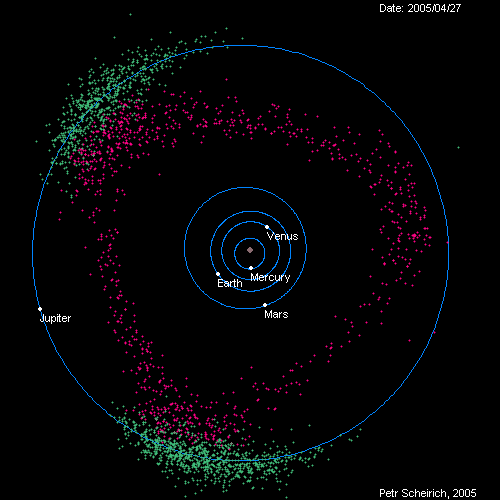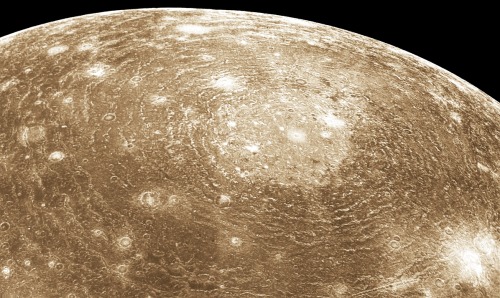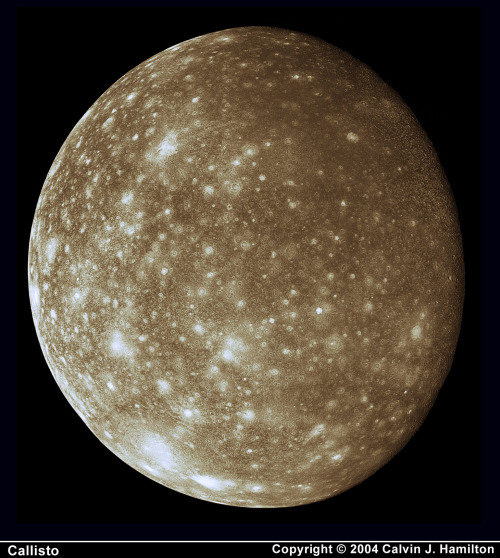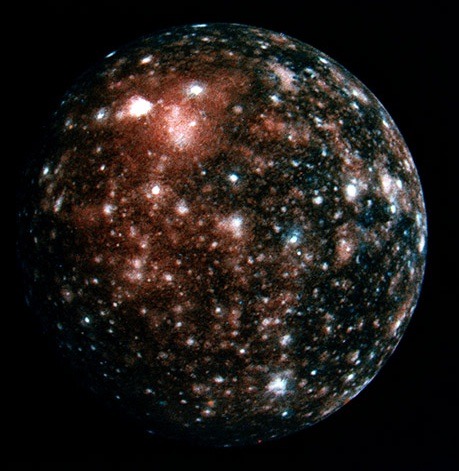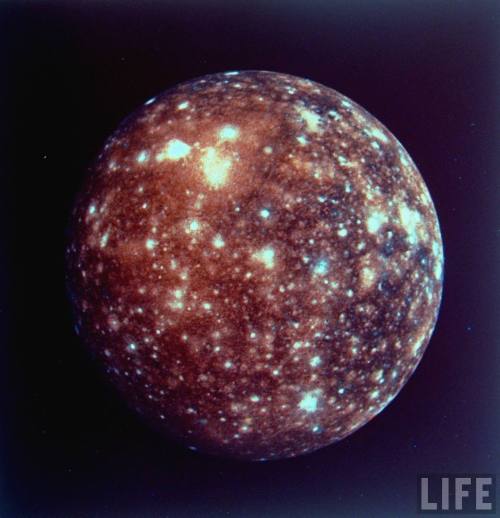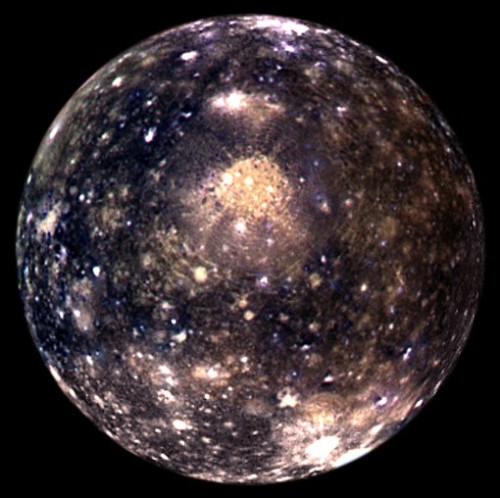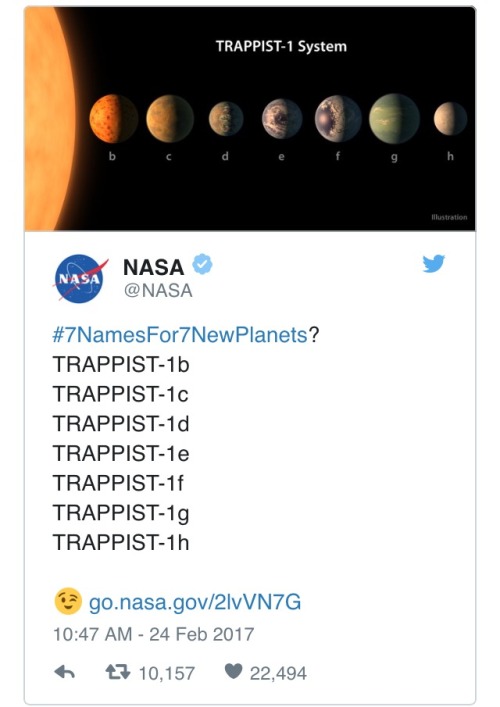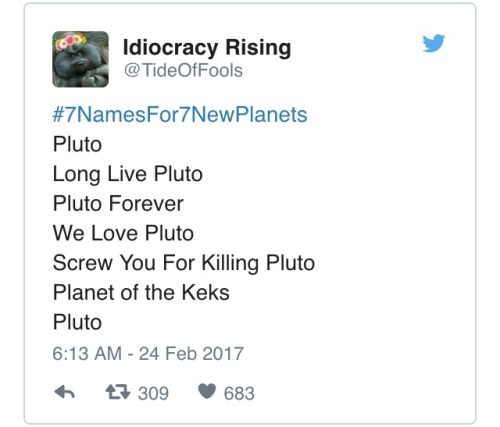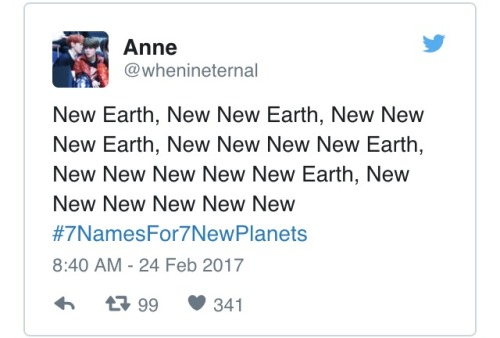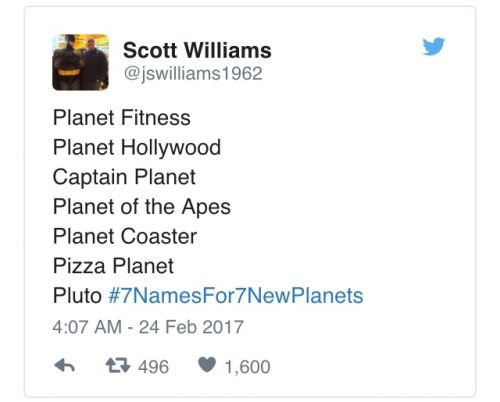The Past, Present And Future Of Exploration On Mars
The Past, Present and Future of Exploration on Mars
Today, we’re celebrating the Red Planet! Since our first close-up picture of Mars in 1965, spacecraft voyages to the Red Planet have revealed a world strangely familiar, yet different enough to challenge our perceptions of what makes a planet work.

You’d think Mars would be easier to understand. Like Earth, Mars has polar ice caps and clouds in its atmosphere, seasonal weather patterns, volcanoes, canyons and other recognizable features. However, conditions on Mars vary wildly from what we know on our own planet.
Join us as we highlight some of the exploration on Mars from the past, present and future:
PAST
Viking Landers

Our Viking Project found a place in history when it became the first U.S. mission to land a spacecraft safely on the surface of Mars and return images of the surface. Two identical spacecraft, each consisting of a lander and an orbiter, were built. Each orbiter-lander pair flew together and entered Mars orbit; the landers then separated and descended to the planet’s surface.

Besides taking photographs and collecting other science data, the two landers conducted three biology experiments designed to look for possible signs of life.
Pathfinder Rover

In 1997, Pathfinder was the first-ever robotic rover to land on the surface of Mars. It was designed as a technology demonstration of a new way to deliver an instrumented lander to the surface of a planet. Mars Pathfinder used an innovative method of directly entering the Martian atmosphere, assisted by a parachute to slow its descent and a giant system of airbags to cushion the impact.

Pathfinder not only accomplished its goal but also returned an unprecedented amount of data and outlived its primary design life.
PRESENT
Spirit and Opportunity

In January 2004, two robotic geologists named Spirit and Opportunity landed on opposite sides of the Red Planet. With far greater mobility than the 1997 Mars Pathfinder rover, these robotic explorers have trekked for miles across the Martian surface, conducting field geology and making atmospheric observations. Carrying identical, sophisticated sets of science instruments, both rovers have found evidence of ancient Martian environments where intermittently wet and habitable conditions existed.

Both missions exceeded their planned 90-day mission lifetimes by many years. Spirit lasted 20 times longer than its original design until its final communication to Earth on March 22, 2010. Opportunity continues to operate more than a decade after launch.
Mars Reconnaissance Orbiter

Our Mars Reconnaissance Orbiter left Earth in 2005 on a search for evidence that water persisted on the surface of Mars for a long period of time. While other Mars missions have shown that water flowed across the surface in Mars’ history, it remained a mystery whether water was ever around long enough to provide a habitat for life.

In addition to using the rover to study Mars, we’re using data and imagery from this mission to survey possible future human landing sites on the Red Planet.
Curiosity

The Curiosity rover is the largest and most capable rover ever sent to Mars. It launched November 26, 2011 and landed on Mars on Aug. 5, 2012. Curiosity set out to answer the question: Did Mars ever have the right environmental conditions to support small life forms called microbes?

Early in its mission, Curiosity’s scientific tools found chemical and mineral evidence of past habitable environments on Mars. It continues to explore the rock record from a time when Mars could have been home to microbial life.
FUTURE
Space Launch System Rocket

We’re currently building the world’s most powerful rocket, the Space Launch System (SLS). When completed, this rocket will enable astronauts to begin their journey to explore destinations far into the solar system, including Mars.
Orion Spacecraft

The Orion spacecraft will sit atop the Space Launch System rocket as it launches humans deeper into space than ever before. Orion will serve as the exploration vehicle that will carry the crew to space, provide emergency abort capability, sustain the crew during the space travel and provide safe re-entry from deep space return velocities.
Mars 2020

The Mars 2020 rover mission takes the next step in exploration of the Red Planet by not only seeking signs of habitable conditions in the ancient past, but also searching for signs of past microbial life itself.

The Mars 2020 rover introduces a drill that can collect core samples of the most promising rocks and soils and set them aside in a “cache” on the surface of Mars. The mission will also test a method for producing oxygen from the Martian atmosphere, identify other resources (such as subsurface water), improve landing techniques and characterize weather, dust and other potential environmental conditions that could affect future astronauts living and working on the Red Planet.

For decades, we’ve sent orbiters, landers and rovers, dramatically increasing our knowledge about the Red Planet and paving the way for future human explorers. Mars is the next tangible frontier for human exploration, and it’s an achievable goal. There are challenges to pioneering Mars, but we know they are solvable.
To discover more about Mars exploration, visit: https://www.nasa.gov/topics/journeytomars/index.html
Make sure to follow us on Tumblr for your regular dose of space: http://nasa.tumblr.com
More Posts from Fillthevoid-with-space and Others
Shooting for an April first post date! I just started researching and hooboy, I am going to go way way way way down the rabbit hole of tangents. I think everything is interesting and cool.
Celebrating 17 Years of NASA’s ‘Little Earth Satellite That Could’
The satellite was little— the size of a small refrigerator; it was only supposed to last one year and constructed and operated on a shoestring budget — yet it persisted.
After 17 years of operation, more than 1,500 research papers generated and 180,000 images captured, one of NASA’s pathfinder Earth satellites for testing new satellite technologies and concepts comes to an end on March 30, 2017. The Earth Observing-1 (EO-1) satellite will be powered off on that date but will not enter Earth’s atmosphere until 2056.
“The Earth Observing-1 satellite is like The Little Engine That Could,” said Betsy Middleton, project scientist for the satellite at NASA’s Goddard Space Flight Center in Greenbelt, Maryland.
To celebrate the mission, we’re highlighting some of EO-1’s notable contributions to scientific research, spaceflight advancements and society.
Scientists Learn More About Earth in Fine Detail

This animation shifts between an image showing flooding that occurred at the Arkansas and Mississippi rivers on January 12, 2016, captured by ALI and the rivers at normal levels on February 14, 2015 taken by the Operational Land Imager on Landsat 8. Credit: NASA’s Earth Observatory
EO-1 carried the Advanced Land Imager that improved observations of forest cover, crops, coastal waters and small particles in the air known as aerosols. These improvements allowed researchers to identify smaller features on a local scale such as floods and landslides, which were especially useful for disaster support.

On the night of Sept. 6, 2014, EO-1’s Hyperion observed the ongoing eruption at Holuhraun, Iceland as shown in the above image. Partially covered by clouds, this scene shows the extent of the lava flows that had been erupting.
EO-1’s other key instrument Hyperion provided an even greater level of detail in measuring the chemical constituents of Earth’s surface— akin to going from a black and white television of the 1940s to the high-definition color televisions of today. Hyperion’s level of sophistication doesn’t just show that plants are present, but can actually differentiate between corn, sorghum and many other species and ecosystems. Scientists and forest managers used these data, for instance, to explore remote terrain or to take stock of smoke and other chemical constituents during volcanic eruptions, and how they change through time.
Crowdsourced Satellite Images of Disasters

EO-1 was one of the first satellites to capture the scene after the World Trade Center attacks (pictured above) and the flooding in New Orleans after Hurricane Katrina. EO-1 also observed the toxic sludge in western Hungary in October 2010 and a large methane leak in southern California in October 2015. All of these scenes, which EO-1 provided quick, high-quality satellite imagery of the event, were covered in major news outlets. All of these scenes were also captured because of user requests. EO-1 had the capability of being user-driven, meaning the public could submit a request to the team for where they wanted the satellite to gather data along its fixed orbits.

This image shows toxic sludge (red-orange streak) running west from an aluminum oxide plant in western Hungary after a wall broke allowing the sludge to spill from the factory on October 4, 2010. This image was taken by EO-1’s Advanced Land Imager on October 9, 2010. Credit: NASA’s Earth Observatory
Artificial Intelligence Enables More Efficient Satellite Collaboration

This image of volcanic activity on Antarctica’s Mount Erebus on May 7, 2004 was taken by EO-1’s Advanced Land Imager after sensing thermal emissions from the volcano. The satellite gave itself new orders to take another image several hours later. Credit: Earth Observatory
EO-1 was among the first satellites to be programmed with a form of artificial intelligence software, allowing the satellite to make decisions based on the data it collects. For instance, if a scientist commanded EO-1 to take a picture of an erupting volcano, the software could decide to automatically take a follow-up image the next time it passed overhead. The Autonomous Sciencecraft Experiment software was developed by NASA’s Jet Propulsion Laboratory in Pasadena, California, and was uploaded to EO-1 three years after it launched.

This image of Nassau Bahamas was taken by EO-1’s Advanced Land Imager on Oct 8, 2016, shortly after Hurricane Matthew hit. European, Japanese, Canadian, and Italian Space Agency members of the international coalition Committee on Earth Observation Satellites used their respective satellites to take images over the Caribbean islands and the U.S. Southeast coastline during Hurricane Matthew. Images were used to make flood maps in response to requests from disaster management agencies in Haiti, Dominican Republic, St. Martin, Bahamas, and the U.S. Federal Emergency Management Agency.
The artificial intelligence software also allows a group of satellites and ground sensors to communicate and coordinate with one another with no manual prompting. Called a “sensor web”, if a satellite viewed an interesting scene, it could alert other satellites on the network to collect data during their passes over the same area. Together, they more quickly observe and downlink data from the scene than waiting for human orders. NASA’s SensorWeb software reduces the wait time for data from weeks to days or hours, which is especially helpful for emergency responders.
Laying the Foundation for ‘Formation Flying’

This animation shows the Rodeo-Chediski fire on July 7, 2002, that were taken one minute apart by Landsat 7 (burned areas in red) and EO-1 (burned areas in purple). This precision formation flying allowed EO-1 to directly compare the data and performance from its land imager and the Landsat 7 ETM+. EO-1’s most important technology goal was to test ALI for future Landsat satellites, which was accomplished on Landsat 8. Credit: NASA’s Goddard Space Flight Center
EO-1 was a pioneer in precision “formation flying” that kept it orbiting Earth exactly one minute behind the Landsat 7 satellite, already in orbit. Before EO-1, no satellite had flown that close to another satellite in the same orbit. EO-1 used formation flying to do a side-by-side comparison of its onboard ALI with Landsat 7’s operational imager to compare the products from the two imagers. Today, many satellites that measure different characteristics of Earth, including the five satellites in NASA’s A Train, are positioned within seconds to minutes of one another to make observations on the surface near-simultaneously.
For more information on EO-1’s major accomplishments, visit: https://www.nasa.gov/feature/goddard/2017/celebrating-17-years-of-nasa-s-little-earth-satellite-that-could
Make sure to follow us on Tumblr for your regular dose of space: http://nasa.tumblr.com/.
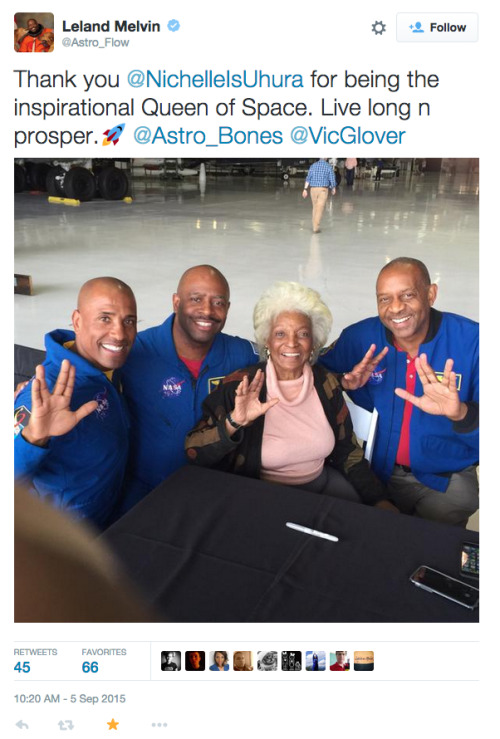
Why Star Trek matters.
Talking to a real cosmonaut
I met cosmonaut Sergei Volkov the other day as well as astronaut Andreas Mogensen (yeah I was geeking out hard) and I asked Sergei, after a total of 1½ year in space, what came as the biggest surprise and I expected this grand answer..
but he was like “in space, your t-shirt is floating too. It’s not hanging on you. It’s a weird sensation. There’s not really anything in space that stresses your body which is why we exercise.. like Andreas said, first time in space, you forget that you can just leave your fork floating while you’re opening your food. you try and put it down on a surface or hold everything in your hand like you’re afraid to drop it. And the fact that you can work 10 hours and concentrate really hard and not be sore in your neck.. Because there’s no gravity pulling at you. Dreams change as well after a while. I would dream about doing stuff on the space station but in my dreams there was gravity. It’s such a basic human thing, gravity.”
on the subject of returning back to earth: “Once you get back to earth, the first few days are tough. I took a shower instead of a bath, and it felt like the water was crushing me, I had to step out of the shower, it was just too overwhelming. Holding up your cell phone to your ear, It’s like holding a brick.”
I talked about spaghettification but someone did one better and made a dang cute comic about it!






Starry Greetings!
This week’s comic: Spaghettification
https://www.youtube.com/watch?v=OGn_w-3pjMc
http://science.howstuffworks.com/science-vs-myth/what-if/what-if-fell-into-black-hole2.htm
I mention New Horizons in today’s podcast but here’s some more up-to-date info!
Solar System: Things to Know This Week
Time for a little reconnaissance.

Our New Horizons spacecraft won’t arrive at its next destination in the distant Kuiper Belt—an object known as 2014 MU69—until New Year’s Day 2019, but researchers are already starting to study its environment thanks to a few rare observational opportunities this summer, including one on July 17. This week, we’re sharing 10 things to know about this exciting mission to a vast region of ancient mini-worlds billions of miles away.
1. First, Some Background

New Horizons launched on Jan. 19, 2006. It swung past Jupiter for a gravity boost and scientific studies in February 2007, and conducted a six-month reconnaissance flyby study of Pluto and its moons in summer 2015. The mission culminated with the closest approach to Pluto on July 14, 2015. Now, as part of an extended mission, the New Horizons spacecraft is heading farther into the Kuiper Belt.
2. A Kuiper Belt refresher

The Kuiper Belt is a region full of objects presumed to be remnants from the formation of our solar system some 4.6 billion years ago. It includes dwarf planets such as Pluto and is populated with hundreds of thousands of icy bodies larger than 62 miles (100 km) across and an estimated trillion or more comets. The first Kuiper Belt object was discovered in 1992.
3. That’s Pretty Far

When New Horizons flies by MU69 in 2019, it will be the most distant object ever explored by a spacecraft. This ancient Kuiper Belt object is not well understood because it is faint, small, and very far away, located approximately 4.1 billion miles (6.6 billion km) from Earth.
4. Shadow Play

To study this distant object from Earth, the New Horizons team have used data from the Hubble Space Telescope and the European Space Agency’s Gaia satellite to calculate where MU69 would cast a shadow on Earth’s surface as it passes in front of a star, an event known as an occultation.
5. An International Effort

One occultation occurred on June 3, 2017. More than 50 mission team members and collaborators set up telescopes across South Africa and Argentina, aiming to catch a two-second glimpse of the object’s shadow as it raced across the Earth. Joining in on the occultation observations were NASA’s Hubble Space Telescope and Gaia, a space observatory of the European Space Agency (ESA).
6. Piecing Together the Puzzle

Combined, the pre-positioned mobile telescopes captured more than 100,000 images of the occultation star that can be used to assess the Kuiper Belt object’s environment. While MU69 itself eluded direct detection, the June 3 data provided valuable and surprising insights. “These data show that MU69 might not be as dark or as large as some expected,” said occultation team leader Marc Buie, a New Horizons science team member from Southwest Research Institute in Boulder, Colorado.
7. One Major Missing Piece

Clear detection of MU69 remains elusive. “These [June 3 occultation] results are telling us something really interesting,” said New Horizons Principal Investigator Alan Stern, of the Southwest Research Institute. “The fact that we accomplished the occultation observations from every planned observing site but didn’t detect the object itself likely means that either MU69 is highly reflective and smaller than some expected, or it may be a binary or even a swarm of smaller bodies left from the time when the planets in our solar system formed.”
8. Another Opportunity

On July 10, the SOFIA team positioned its aircraft in the center of the shadow, pointing its powerful 100-inch (2.5-meter) telescope at MU69 when the object passed in front of the background star. The mission team will now analyze that data over the next few weeks, looking in particular for rings or debris around MU69 that might present problems for New Horizons when the spacecraft flies by in 2019. “This was the most challenging occultation observation because MU69 is so small and so distant,” said Kimberly Ennico Smith, SOFIA project scientist.
9. The Latest

On July 17, the Hubble Space Telescope will check for debris around MU69 while team members set up another “fence line” of small mobile telescopes along the predicted ground track of the occultation shadow in southern Argentina.
10. Past to Present

New Horizons has had quite the journey. Check out some of these mission videos for a quick tour of its major accomplishments and what’s next for this impressive spacecraft.
Make sure to follow us on Tumblr for your regular dose of space: http://nasa.tumblr.com
It made it!

Thank you SpaceX. You just gave us the keys to our dreams. So much is now possible…
(Image credit: SpaceX SES-10 stream)
-
 mettwingramatel liked this · 1 year ago
mettwingramatel liked this · 1 year ago -
 exo-plushie liked this · 2 years ago
exo-plushie liked this · 2 years ago -
 comeoffage reblogged this · 4 years ago
comeoffage reblogged this · 4 years ago -
 the-demon-colonel liked this · 4 years ago
the-demon-colonel liked this · 4 years ago -
 andrejupiter liked this · 4 years ago
andrejupiter liked this · 4 years ago -
 alux-ulkan liked this · 4 years ago
alux-ulkan liked this · 4 years ago -
 gatebreaker reblogged this · 5 years ago
gatebreaker reblogged this · 5 years ago -
 gatebreaker liked this · 5 years ago
gatebreaker liked this · 5 years ago -
 theedgeofadaydream liked this · 5 years ago
theedgeofadaydream liked this · 5 years ago -
 overthemoon-underthestars liked this · 5 years ago
overthemoon-underthestars liked this · 5 years ago -
 xidigahacirka liked this · 5 years ago
xidigahacirka liked this · 5 years ago -
 scienzaefantasia reblogged this · 5 years ago
scienzaefantasia reblogged this · 5 years ago -
 scienzaefantasia liked this · 5 years ago
scienzaefantasia liked this · 5 years ago -
 dinasilvertongue reblogged this · 5 years ago
dinasilvertongue reblogged this · 5 years ago -
 michelangelina reblogged this · 5 years ago
michelangelina reblogged this · 5 years ago -
 will-ruadh liked this · 5 years ago
will-ruadh liked this · 5 years ago -
 scienceandtechnologymatter liked this · 6 years ago
scienceandtechnologymatter liked this · 6 years ago -
 starlight1012 liked this · 6 years ago
starlight1012 liked this · 6 years ago -
 starlight1012 reblogged this · 6 years ago
starlight1012 reblogged this · 6 years ago -
 undernewmanagenent reblogged this · 6 years ago
undernewmanagenent reblogged this · 6 years ago -
 agentofmcu liked this · 6 years ago
agentofmcu liked this · 6 years ago -
 frogmuttforever liked this · 6 years ago
frogmuttforever liked this · 6 years ago -
 whyhellotheregandalf liked this · 6 years ago
whyhellotheregandalf liked this · 6 years ago -
 theparanoidpachyderm reblogged this · 6 years ago
theparanoidpachyderm reblogged this · 6 years ago -
 theparanoidpachyderm liked this · 6 years ago
theparanoidpachyderm liked this · 6 years ago -
 blueinkblot reblogged this · 6 years ago
blueinkblot reblogged this · 6 years ago -
 lady-of-tarth liked this · 6 years ago
lady-of-tarth liked this · 6 years ago
A podcast project to fill the space in my heart and my time that used to be filled with academic research. In 2018, that space gets filled with... MORE SPACE! Cheerfully researched, painstakingly edited, informal as hell, definitely worth everyone's time.
243 posts
